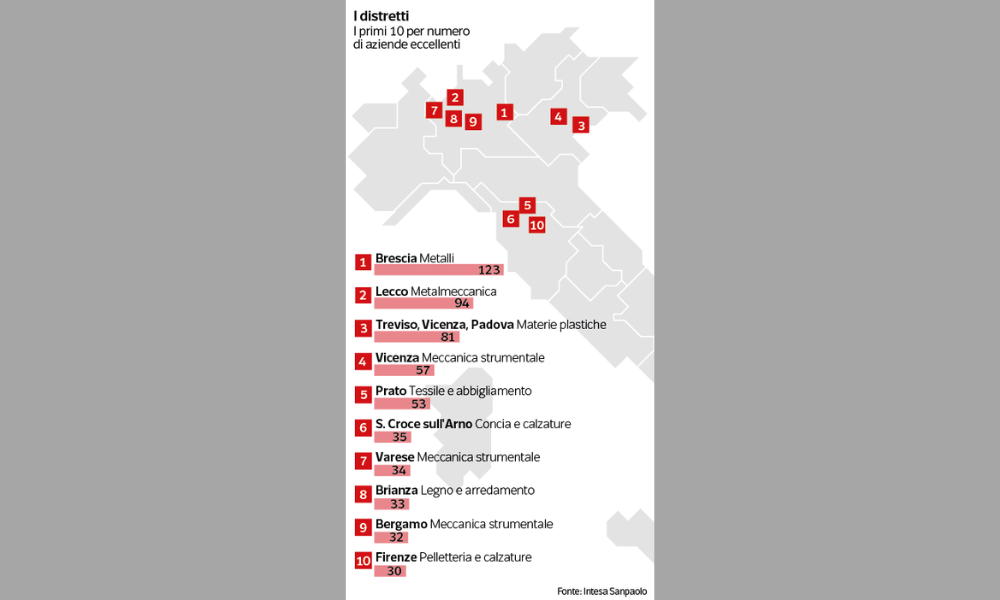Attualità
Precisazioni sui progetti PNNR — Highlights on NNRP projects

Precisazioni sui progetti PNNR
di Marco Andreozzi
Su tutti i media di qualche giorno fa gli italiani sono stati informati di difficoltà inerenti all’implementazione del PNRR: un numero esorbitante di proposte progettuali – quasi 180.000 – e un impiego ad oggi del solo 6% dei fondi disponibili. I progetti vanno terminati entro il 2026, sicché è in atto una revisione e selezione degli stessi. Al riguardo, è bene che i criteri di selezione rispettino alcune tecnicità perché siano prese le decisioni ottimali d’investimento rispetto agli obiettivi ufficiali del Piano.
In primis, si deve partire dai punti di forza del sistema produttivo italiano, ovvero segmenti industriali e caratteristiche dell’ecosistema manifatturiero dove il Paese è numero uno almeno in Europa. I primati vanno mantenuti e rafforzati, anticipando che l’Italia è il primo Paese in Europa per sostenibilità e circolarità dell’economia nell’uso delle risorse manifatturiere. Il Paese risulta al vertice per giro d’affari in disegno industriale e stile, anche collegato al settore moda, e idem nell’industria del legno e mobile, anche collegata alla cantieristica navale del lusso che vede il Bel Paese al vertice mondiale. Inoltre, è prima in Europa nell’agroalimentare (e sicurezza alimentare) con la tradizione culinaria italiana al primo posto al mondo in tutti i sondaggi internazionali, collegamento con il settore turistico da valorizzare di più (1 posto di lavoro su 8, escluso il settore finanziario). È la prima nazione in Europa anche nella farmaceutica, settore in particolare evidenza con tutto il segmento allargato delle bio-tecnologie su cui si deve puntare di più. Medaglia d’oro anche in cinema e audiovisivo. Inoltre, vanno supportate le prime voci di esportazione – produzione di macchinari specializzati e attrezzature speciali varie – inclusi i segmenti della robotica e dello spazio, quest’ultimo oltremodo importante e da rafforzare. Altra corretta allocazione dei fondi PNRR è quella dedicata al miglioramento dei servizi nei distretti principali per numero di imprese eccellenti (segnatamente in Lombardia, Toscana e Veneto).
Ulteriori investimenti devono favorire l’accorciamento competitivo delle filiere industriali, con fuoco sul Mezzogiorno, miglioramenti infrastrutturali ed eolico fuori-costa inclusi. Quindi, alcuni moltiplicatori ed indicatori statistici devono orientare le scelte. Si sa che un nuovo posto di lavoro in tecnologia ne genera 2 nei servizi: il verso è chiaro, ma necessita entrare con più rilevanza nell’agro-industriale e nel quantum-computazionale. E ancora, ogni Euro di domanda aggiuntiva in servizi e prodotti audiovisivi, settore delle costruzioni, ed economia marina (circa il 10% del PIL) attiva un effetto moltiplicatore pari a 2 Euro. Inoltre, la metà degli italiani lavora per imprese con meno di 10 persone, di conseguenza l’Italia è il quinto Paese più vulnerabile in ambito OCSE, altro fatto a cui dedicare fondi disponibili.
Auguriamoci, intanto, che il governo riesca ad attrarre l’investimento INTEL di assemblaggio e confezionamento microprocessori; meglio sarebbe in una delle zone economiche speciali (ZES) al Sud, che per decollare necessitano adeguata promozione globale e nuovo valore aggiunto infrastrutturale. Si pensi al sistema portuale del Mezzogiorno, i cui retroporti devono funzionare meglio e probabilmente essere messi a sistema per divenire la prima piattaforma logistica del Mediterraneo. Inoltre, i terreni marginali e abbandonati sono buoni potenziali per finanziare agricoltura energetica atta alla produzione di biocombustibili, idonei anche ai trasporti marittimi. Peccato che la Commissione Europea abbia escluso i bio-carburanti dal FitFor55 al 2035, includendo però quelli sintetici (tedeschi), che afferiscono sempre a produzione energetica rinnovabile e correlata ad importazioni da fuori Europa. Opportuno un ripensamento, e di certo vade retro sprecare fondi PNRR su fotovoltaico e mobilità elettrica.
Highlights on NNRP projects
By Marco Andreozzi
In all the media a few days ago the Italians were informed of the difficulties in the implementation of the NRRP: an exorbitant number of project proposals – almost 180,000 – and a use to date of only 6% of the available funds. The projects must be completed by 2026, so that a review and selection is underway. In this regard, it is good that the selection criteria respect some technicalities so that the optimal investment decisions are taken versus the official objectives of the Plan.
First of all, we must start from the strengths of the Italian production system, i.e. industrial segments and characteristics of the manufacturing ecosystem where the country is number one at least in Europe. The records must be maintained and strengthened, anticipating that Italy is the top country in Europe for sustainability and circularity of the economy in the use of manufacturing resources. The country is at the top for turnover in industrial design and style, also connected to the fashion sector, and the same in the wood and furniture industry, also connected to the luxury shipbuilding which sees the Bel Paese at the world top. Furthermore, it tops Europe in agri-food (and food safety) with Italian culinary tradition ranking first in the world in any international survey, a link with the tourism sector to be valued more (1 job out of 8, excluding the financial sector ). It is also the top nation in Europe in pharmaceuticals, a sector in particular evidence with the whole enlarged segment of bio-technologies on which moro focus is needed. Gold medal also in cinema and audiovisual. Furthermore, the major export sectors must be supported – manufacturing of specialized machinery and various special equipment – including the segments of robotics and space, the latter being extremely important and to be strengthened. Another correct allocation of PNRR funds is the one for the improvement of services to support the main industrial districts for number of excellent companies (namely in Lombardy, Tuscany and Veneto).
Other investments must favor the competitive shortening of the supply-chain, with a focus on the South, infrastructural improvements and offshore wind power included. Therefore, some multipliers and statistical indicators must guide the selection process. It is known that a new job in technology generates 2 jobs in services: the direction is clear, but it is also necessary to enter the agro-industrial and quantum-computing fields with more relevance. And again, every euro of additional demand in audiovisual services and products, the construction sector, and the marine economy (about 10% of GDP) activates a multiplier effect equal to 2 euros. Furthermore, half of Italians work for companies with fewer than 10 people, and consequently Italy is the fifth most vulnerable country in the OECD context: an issue to which available funds must be devoted.
In the meantime, let’s hope that the government will be able to attract INTEL’s investment in microchips assembly and packaging; it would be better in one of the special economic zones (SEZ) of the South, which need adequate global promotion and new infrastructural added value to take off. Think of the ports of the Mezzogiorno, whose retroports need to function better and probably be set up into a system to become the first logistic platform in the Mediterranean Sea. Furthermore, marginal and abandoned lands have good potential for the financing of energy-agriculture, suitable for the production of biofuels, fit for maritime transport, too. It is a pity that the European Commission has excluded bio-fuels from the FitFor55 by 2035, though allowing the synthetic ones (Germans) which always refer to renewable energy generation and correlated to imports from outside Europe. A rethink is appropriate, and certainly vade retro to waste NRRP funds on photovoltaics and electric mobility.
 Marco Andreozzi, è Dottore in Ingegneria Meccanica, Economia/Amministrazione (Politecnico di Torino), tecnologo industriale e specialista del settore energetico, proviene da esperienze professionali in cinque multinazionali in Italia e paesi extra-europei, e come direttore generale; nomade digitale dal 2004, e sinologo, parla correttamente il mandarino.
Marco Andreozzi, è Dottore in Ingegneria Meccanica, Economia/Amministrazione (Politecnico di Torino), tecnologo industriale e specialista del settore energetico, proviene da esperienze professionali in cinque multinazionali in Italia e paesi extra-europei, e come direttore generale; nomade digitale dal 2004, e sinologo, parla correttamente il mandarino.
Marco Andreozzi, is Doctor of mechanical engineering (polytechnic of Turin – Italy), industrial technologist and energy sector specialist, comes from professional experiences in five global corporates in Italy and extra-European countries, and as business leader; digital nomad since 2004, and China-hand, he is fluent in Mandarin.













